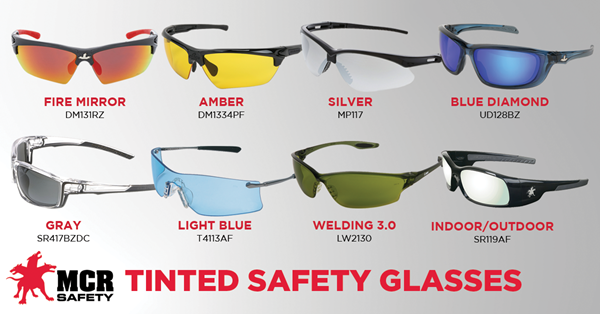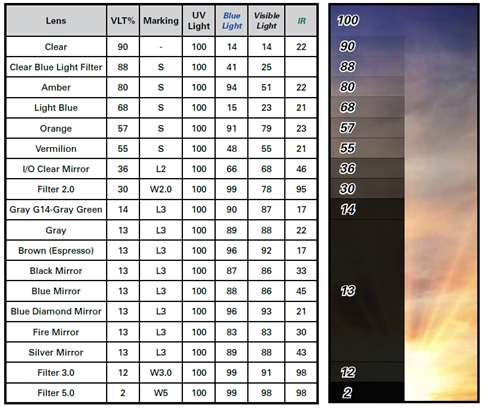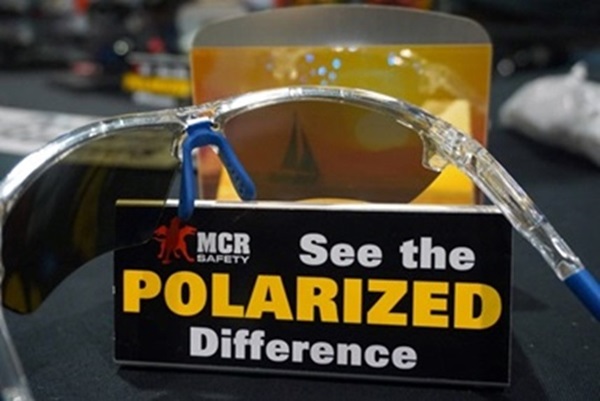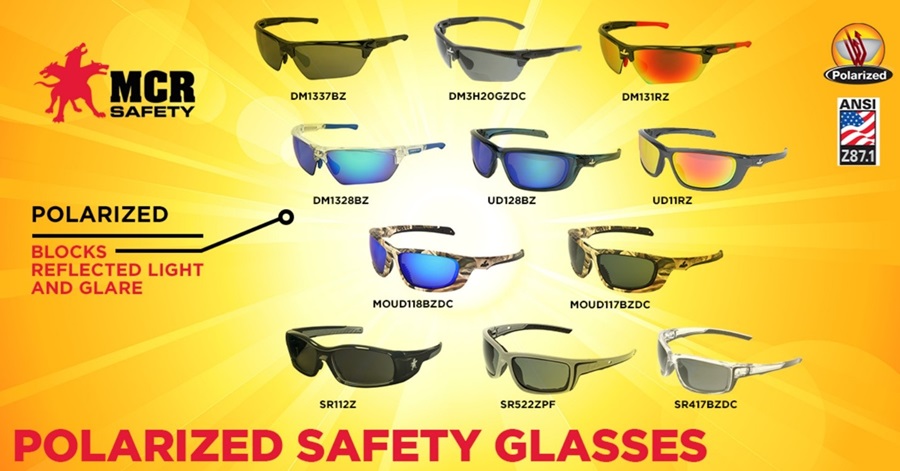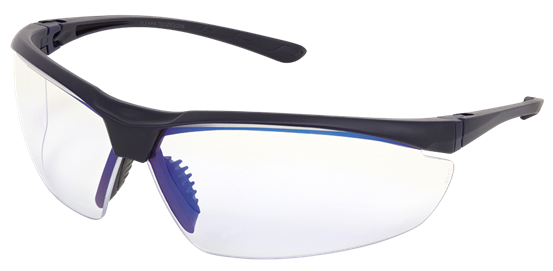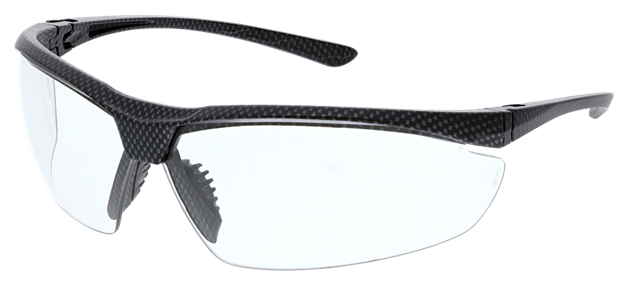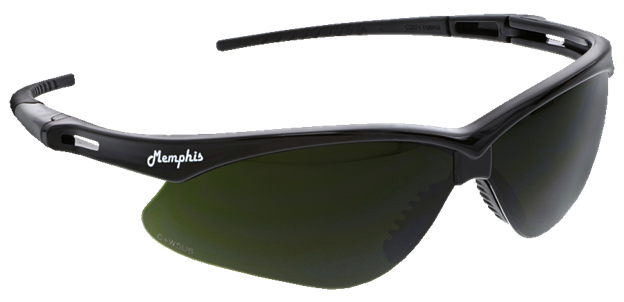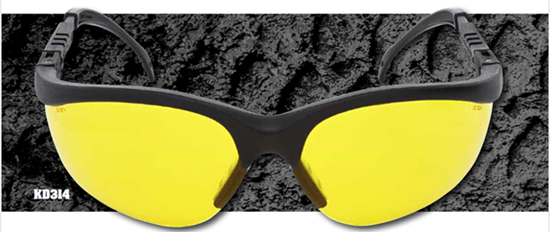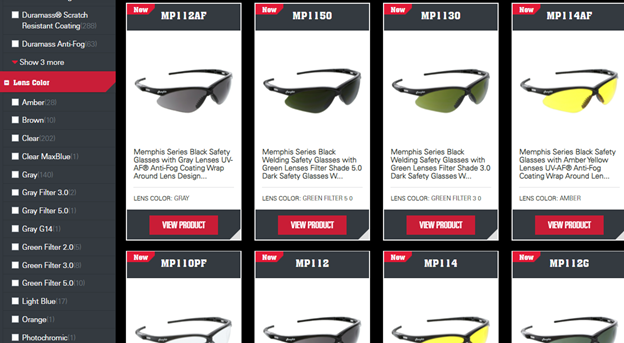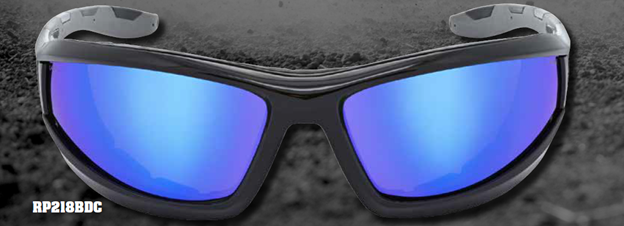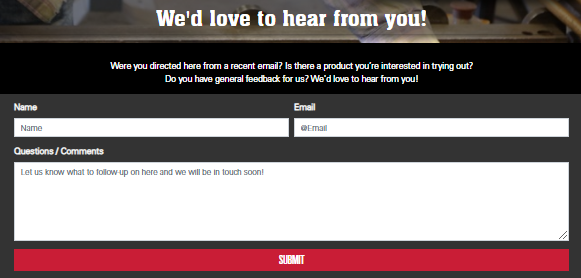24 Sep 09/24/2021
Lens Tint Guide: Helping You Select the Best Lens Tint
Anytime you're choosing something to wear, making a product decision can be a bit overwhelming. If you think that purchasing safety glasses doesn't come with numerous options, think again. Yes, safety glasses are one of the more straightforward safety products to purchase, as all our safety glasses meet the ANSI Z87+ impact standard, but there's more to it than that. Different safety glasses offer different features, and lens tint is one of the most important ones to consider.
Selecting the wrong lens tint can reduce or distort a wearer's vision in specific applications. For example, if you're working outdoors, a darker shade will help prevent glare from the sun's rays; however, a lighter color makes the most sense for those who work indoors. While it might be fantastic news for many if there were only two clear-cut choices, as you'll soon find out, there are numerous lens options to accommodate different settings and environments.
MCR Safety is known for having one of the widest selections of tinted safety glasses!
At MCR Safety, we know you want to look good in whatever safety glasses you choose! In addition to style and looks, you also want to wear the correct lens tint. This article will explore the plethora of lens tinting options available to users today and help you decide which tint is best for you.
What Is Lens Tint?
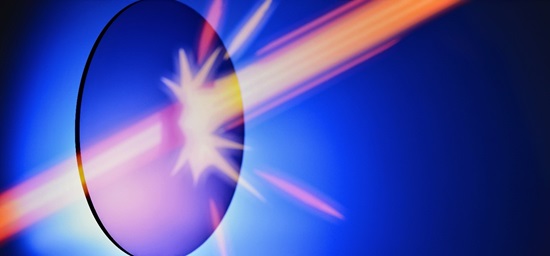
Lens tinting is the process of changing the color of the lens in a pair of safety or everyday wear glasses. Tinted lenses filter the light that comes through to your eyes. If you have ever put on a pair of sunglasses, you have already experienced lens tinting. When wearing tinted lenses, you may have noticed that the world around you can look somewhat different depending on the tint color, and we don't just mean looking at the world through rose-colored glasses.
Gray sunglasses, for example, tend to give a pretty accurate representation of the colors around you, whereas brown lenses provide a bit less color differentiation. Some tints can help enhance colors, increase clarity, reduce glare, and improve contrast. Additionally, tinted lenses can help prevent eye fatigue.
Lens Tint Color Chart

Lens tints can be cosmetic, or they can be used to provide enhanced protection. The differences in these tints are based on the light absorbed by the tinting treatment and not on the tint color itself. Tints typically between 10 and 20% VLT are designed for brighter conditions, whereas darker settings often require 80 to 90% VLT. For individuals needing a more balanced option, there are styles ranging from 36% to 68% VLT. The lens chart below helps visually showcase the wide range of options available.
VLT Lens Chart
MCR Safety stocks a wide range of tinted lenses, with each tint having its advantages and disadvantages. Let's start with a look at each lens color.
Clear

90% of light is transmitted
A clear lens provides excellent optics for general applications. It's like the vanilla ice cream of lenses, as it's the most recognized lens found in safety glasses.
Here are the primary reasons to choose a clear lens:
- More straightforward vision in low-light settings
- No need to remove glasses when entering inside facilities
Across almost all industries, clear is a popular lens choice because it allows the most light to pass through the lens and does not distort the visible color spectrum. If you're concerned about too much light passing through and damaging your eyesight, don't worry. All our safety glasses, including clear options, block 99.9% of UVA/UVB/UVC light up to 385 nm.
Amber

80% of light is transmitted
Amber is excellent for maximum contrast enhancement, particularly in low-light situations. An amber lens color blocks virtually all violet and blue light at 94%, improving contrast and depth perception.
Here are the primary reasons to choose an amber lens:
- Brightens the viewing area, providing excellent clarity in foggy and hazy low-light conditions
- Helps with clarity and zoning in on details, making amber the preferred lens in shooting glasses
- It is soothing to the eyes, blocking out blue light to result in fewer headaches
Amber is a popular choice for lenses because it makes objects "pop" when viewed, so amber is an excellent choice for inspection work. Keep in mind, however, that amber lenses are not intended for bright light conditions.
Light Blue

68% of light is transmitted
A light blue lens reduces glare from artificial light such as halogen and fluorescent light.
Here are the primary reasons to choose a light blue lens:
- Good contrast in mid-light to bright conditions
- Used in both indoor and outdoor settings
- Reduces yellow light
Many companies prefer a light blue option over an indoor-outdoor option (more on that below), as workers' eyes can still be seen, but the light is blocked.
Orange

57% of light is transmitted
An orange lens reduces eye fatigue by absorbing blue light at 91% blockage.
Here are the primary reasons to choose an orange lens:
- Similar to an amber lens, orange brightens environments
- Less light is allowed through the lens, which is ideal for those wanting a darker shade
- Improves focus in darker settings, limiting potential eye strain
- Vibrant color helps workers stand out more
An orange lens is an excellent choice for low-light applications, making almost everything look brighter, even on those partly sunny days.
Vermillion Pink

55% of light is transmitted
A pink lens reduces all colors equally, allowing for optimum color recognition. It also improves detail by providing a visual contrast for shapes and shades.
Here are the primary reasons to choose a vermillion pink lens:
- Provides the most significant contrast of all lenses
- Comforting to the eyes
- Good in a multitude of weather conditions and an excellent option for use in snowy environments
Pink lens glasses are a favorite among those who are driving and skiing. They are also frequently worn by those working around computer screens.
Gray

13% of light is transmitted
Gray lenses are one of the top-selling lenses purchased as they minimize the amount of light that passes through the lens.
Here are the primary reasons to choose a gray lens:
- It cuts down on glare and reduces eye fatigue
- Reduces brightness while maintaining color recognition on sunny days
Gray lenses are commonly worn in construction or outdoor applications where sunlight and glare cause eye strain and fatigue.
Indoor/Outdoor Clear Mirror

36% of light is transmitted
An indoor-outdoor lens serves the same purpose as a gray lens; however, this option allows more visible light to pass through and may be used indoors.
Here are the primary reasons to choose an indoor-outdoor lens:
- Most versatile lens available, allowing users to move quickly between environments with different light
- It offers a balanced solution between clear and darker tints
This lens is best for workers whose responsibilities take them from inside to outside, like forklift drivers.
Mirror Options




9%-13% of light is transmitted
Silver, Blue, Fire, Emerald, and Blue Diamond
Mirrored tints are the ideal lens tent for bright sunny days. These lenses offer a gray lens with a mirrored coating on the outside. The "mirror" coating reflects light and reduces the amount of light that passes through the lens.
Here are the primary reasons to choose a mirrored lens:
- Sporty looking finish
- It helps prevent eye fatigue in bright conditions
Mirrored lenses are commonly worn in construction and outdoor settings where sunlight and glare cause eye strain and fatigue. You'll also find users wearing mirrored lenses for recreational purposes, such as cycling, fishing, and outdoor sports. Most polarized styles have a mirrored tint.
Specialty Lenses
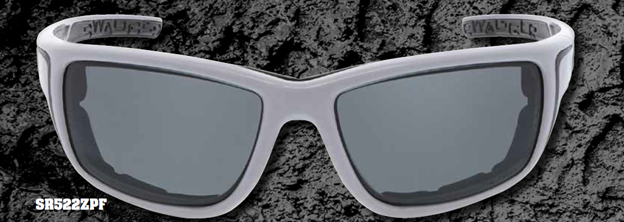
The remaining lenses we highlight all have a specialty purpose.
Polarized Tint
Polarized tinted glasses are fantastic for individuals who spend a lot of time outside. These lenses are popular because of how effective they are in bright, wet, or snowy conditions! Polarized lenses don't just absorb light to keep it from reaching your eyes; they also reduce glare from reflected light. Roads, snow, and water are all notorious for reflected light causing discomfort from glare, and polarized lens options can help alleviate that hazard.
Our polarized lens styles come in multiple shades and can be used in several different frame styles.
Polarized lenses are also an excellent choice for outdoor fanatics and those who enjoy fishing or spending time on the water.
Blue Light Tint
Do you work with computers, tablets, or mobile devices? If so, you may experience tired eyes by the end of the day, as well as blurred vision and headaches. One way to address these issues is to reduce your exposure to blue light.
Blue light tinting protects the eyes from the blue light emitted from scanners, tablets, computers, and phones. The good news is that blue light lenses are clear in their appearance, which means you don't have to worry about people asking questions about the tinting of your lenses indoors. Even people with 20/20 vision benefit from wearing blue light lenses when they're working with screens.
For those interested in learning more about our blue light safety glasses, check out our article Breaking Down Blue Light Safety Glasses.
Photochromic Transition Tint
Photochromic lenses are perfect for those individuals who are constantly in and out of shaded areas. This lens transitions smoothly from a clear tint to a gray tint and back again.
As these lenses are exposed to UV light, they become darker, allowing individuals to wear only one pair of safety glasses no matter where they are. You can find additional details on our photochromic safety glasses by checking out our Praiseworthy Photochromic Safety Glasses and Auto-Tinting Advantages article.
Welding Tint
Our new Memphis Series safety glasses are available in three different filter shade options.
Because welding is one of the leading causes of eye injuries, welders require dark, protective safety glasses at all times. Bright UV light from welding torches can cause "welder flash," like a sunburn in the eye, potentially damaging the eyes permanently.
Welder's filter lenses must meet OSHA standards for tinting. As we highlight in our ANSI Z87 article, a "W" marking on the lens defines the welding filter shade number. W2.0, W3.0, and W5.0 are the different filter levels, with each higher number representing a darker filter.
Lens Coating Technologies

In addition to the lens color itself, the lens coating technology impacts the performance of safety glasses. Here are all the technologies that we use to enhance our safety glasses from scratches and fogging:
- Duramass® Hard Coat – our standard scratch-resistant coating
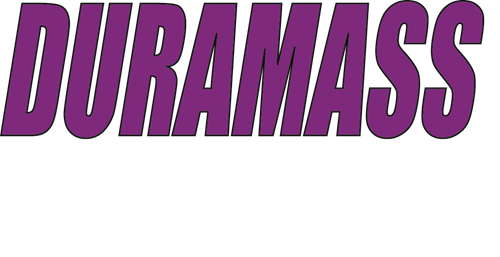
- MAX3® Hard Coat– offers three times the scratch resistance than traditional coatings

- UV-AF® Anti-Fog Coat – an eco-friendly option that offers three times greater anti-fog properties than traditional coatings
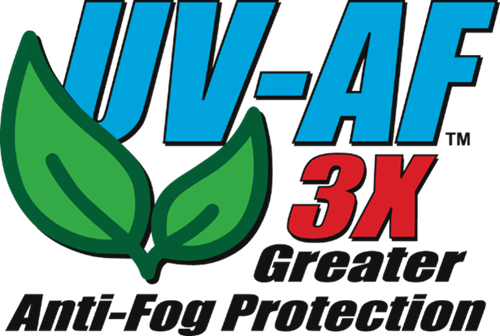
- MAX6® Anti-Fog Coat– provides six times the anti-fog properties than traditional coatings

- MAX36™ Dual Coat – dual-coated with MAX3® outside and MAX6® inside
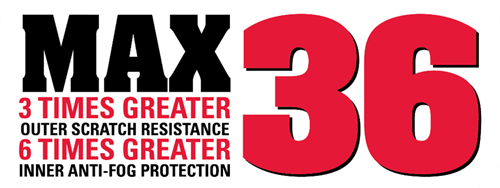
Common Questions

Can you use lens wipes on tinted glasses?
- Yes, you can, and it's an excellent way to keep your tinted shades looking fabulous and avoiding future scratches. However, we only guarantee this claim when you use MCR Safety lens cleaning products. We cannot guarantee how other products may interact with our tinted lenses.
Are tinted lenses better than polarized lenses?
- Tinted lenses and polarized lenses are two different approaches to vision and eye protection in the workplace. One is not better than the other; instead, they serve distinct purposes. Tinting is an effective way to reduce the light your eyes are exposed to, and polarization offers some additional benefits, including glare reduction and increased contrast.
Do bifocal lines show on a tinted lens?
- Like a traditional bifocal line on a standard clear lens, it will also show up on a tinted lens.
Are polarized lenses tinted?
- Polarized sun lenses are both polarized and tinted. The polarization refers to how the lenses react to light rays, and the tinting dictates how much of the light rays are allowed through to the eye.
What is gradient lens tint?
- Gradient lens tinting means that the tint is darker at the top of the lens and slowly lightens to the bottom of the lens, sometimes to the point that the bottom of the lens is transparent. These lenses are popular with people who work in bright light situations but need complete visibility up-close. MCR Safety doesn't stock an actual gradient lens; however, our indoor-outdoor lens mentioned above serves the same purpose, allowing users to wear the same glasses in multiple settings.
What is the best lens tint to get for computer work?
- The best lens for computer work is a blue light tint because screens emit blue light rays that can cause headaches, blurred vision, vision fatigue, and other eye strain problems.
Lens Tint Glasses
Our online safety glass catalog allows you to quickly filter lens color with multiple other attributes. Are you looking for an amber anti-fog safety glass equipped with our 6X greater AF coating? You're only a couple of filter selections away from owning that pair of glasses! Click the image below to start searching for the lens and style options that are right for you.
We Make the Best Lens Tints for Safety Glasses
Safety glasses help ensure your eyes stay protected from workplace hazards. However, the correct lens guarantees your safety and allows the correct light filtration needed for specific applications and environments. Before reading this article, you may have been confused about what different lens colors meant or may not have known that each color serves a specific purpose. We hope you now understand the differences between lens colors and are ready to buy the most optimal set to meet your safety needs. If you still have questions or aren't sure, don't hesitate to reach out to us for additional guidance.
Click the below image to leave us comments, questions, or any concerns.
For over 45 years, MCR Safety has proven to be a world leader in gloves, glasses, and garments. Whether it's protecting workers' eyes on the shop floor, we are there providing solutions to workplace hazards. It's all part of our commitment to protect people.
No matter your industry, we have the personal protective equipment you need.

Learn more about MCR Safety by checking out our most recent video. For more information, browse our website, request a catalog, find a distributor, or give us a call at 800-955-6887.
About the Author
Latest Articles





